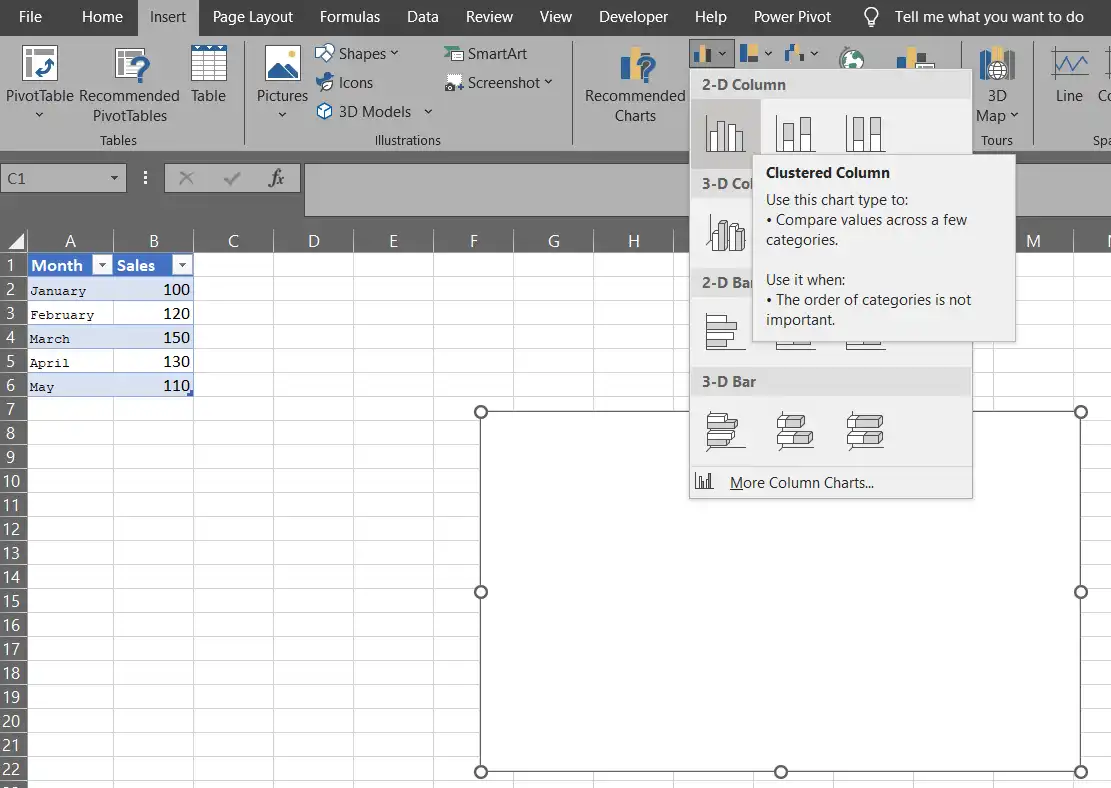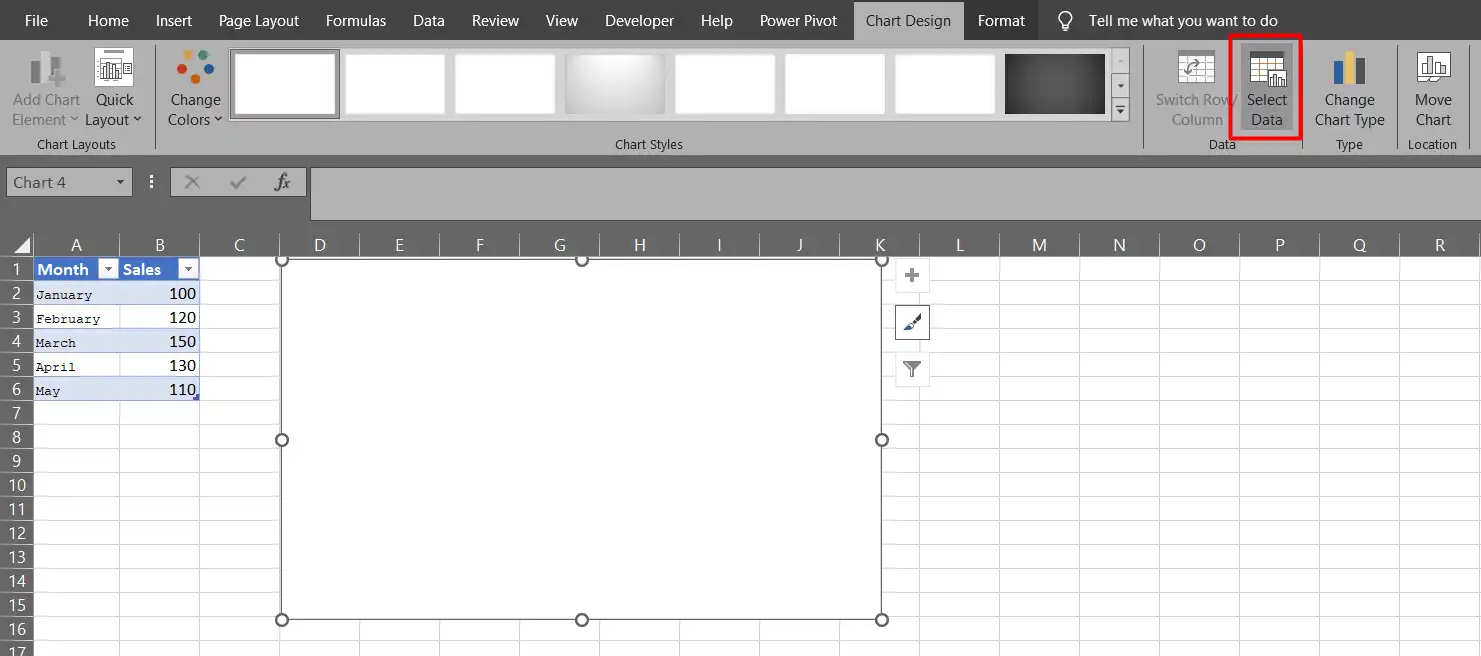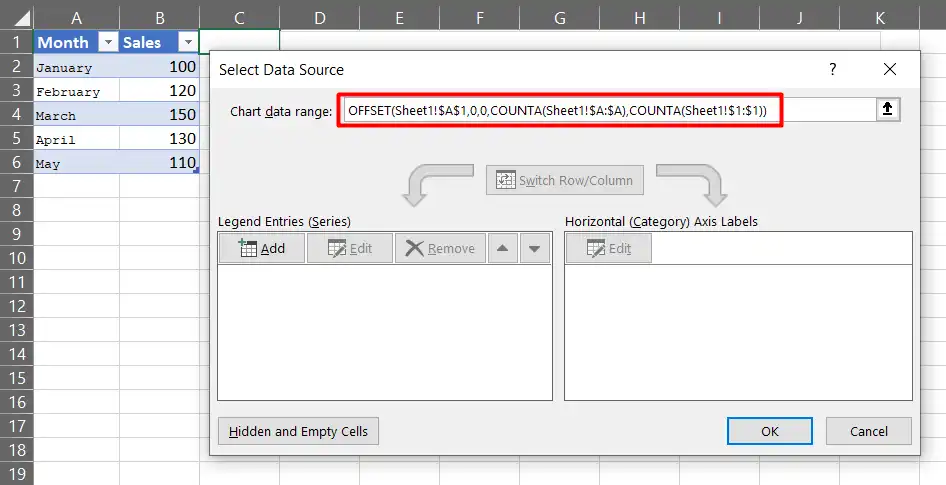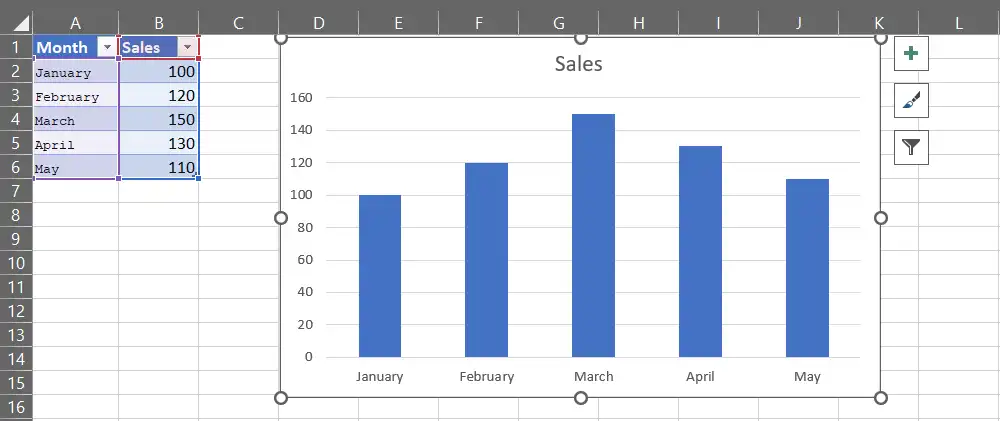Mastering Excel Data Manipulation: Unleashing Advanced Functions
I. Introduction
Welcome to Excel Savvy #5 Your Free Excel Tutorial. Excel Savvy tailors its content to your needs, ensuring that every topic and function resonates with your day-to-day challenges. we encourage you to share your preferences. Have a specific function or section in mind that you’d love to explore in more detail? Your input fuels our content. Drop us a comment, or Contact Us and we’ll tailor our future explorations to address your curiosity!
Now, In the 5th chapter of Excel Savvy, we’ll explore Excel Data Manipulation and Excel Advanced Functions that elevate your Excel skills, specifically focusing on Excel Data Manipulation. As we dive into the intricate world of Excel functions, you’ll discover how these tools can revolutionize your data analysis, making complex tasks more manageable.
Excel, with its extensive repertoire of functions, goes beyond the basics of SUM and AVERAGE. We’ll unravel the power of VLOOKUP, SUMIF/SUMIFS, COUNTIF/COUNTIFS, AVERAGEIF/AVERAGEIFS, IFERROR, INDEX/MATCH, HLOOKUP, OFFSET, CHOOSE, TRANSPOSE, RANK, and INDIRECT. By the end of this journey, you’ll not only understand the syntax of these functions but also witness their applications in real-world scenarios. Let’s get Excel’ing!
II. Excel Advanced Functions: Basics (Must-Know)
A. VLOOKUP Function
1. Introduction to VLOOKUP
VLOOKUP stands as a cornerstone in Excel’s arsenal, offering a potent way to retrieve data from vast datasets. Imagine having a table of sales data, and you need to find the salesperson’s name for a specific product. This is where VLOOKUP shines.
2. Parameters Breakdown
VLOOKUP demands four parameters:
- Lookup_value: The value to search for.
- Table_array: The range with the data.
- Col_index_num: The column number to retrieve data from.
- Range_lookup: A logical value for an exact or approximate match.
3. Example
Consider a sales dataset with products, prices, and salespeople. You can utilize VLOOKUP to swiftly find the salesperson’s name based on the product sold. Tips: ensure data is sorted and utilize ‘FALSE’ for an exact match.
Sales Dataset
| Product | Price ($) | Salesperson |
|---|---|---|
| Product A | 50 | John |
| Product B | 30 | Mary |
| Product C | 25 | Alex |
| Product D | 40 | Bob |
| Product E | 60 | Sarah |
VLOOKUP("Product C", A2:C6, 3, FALSE)This VLOOKUP Example Assuming the dataset is sorted by the “Product” column in ascending order.- The formula looks for “Product C” in the first column of the range A2:C6, and when it finds a match, it returns the corresponding value from the third column (Salesperson). Make sure to use ‘FALSE‘ for an exact match.
- The result would be “Alex” as the salesperson for “Product C”.
B. SUMIF/SUMIFS, COUNTIF/COUNTIFS, AVERAGEIF/AVERAGEIFS
1. Introduction to Conditional Calculations
These functions—SUMIF, COUNTIF, and AVERAGEIF—are your allies in conditional calculations. They shine when you need to sum, count, or average values based on specific conditions.
2. Parameters and Syntax
Understanding the parameters is crucial:
- SUMIF: Range, Criteria, Sum_range.
- COUNTIF: Range, Criteria.
- AVERAGEIF: Range, Criteria, Average_range.
For multiple conditions, upgrade to SUMIFS, COUNTIFS, and AVERAGEIFS. Use these functions when, for instance, you want to sum sales for a specific product category and region.
3. Example: Advanced Applications
e.g., calculating total sales only for a specific region and for products exceeding a certain quantity sold. SUMIFS and COUNTIFS shine in such scenarios.
| Region | Product | Quantity Sold | Price ($) | Salesperson |
|---|---|---|---|---|
| North | Product A | 100 | 50 | John |
| South | Product B | 150 | 30 | Mary |
| East | Product C | 120 | 25 | Alex |
| West | Product D | 80 | 40 | Bob |
| North | Product E | 200 | 60 | Sarah |
| East | Product A | 80 | 50 | John |
| South | Product C | 100 | 25 | Mary |
| West | Product D | 90 | 40 | Alex |
| North | Product E | 180 | 60 | Bob |
=SUMIFS(D2:D10, A2:A10, "North", C2:C10, ">"&100)This formula sums the sales (column D) where the region (column A) is “North” and the quantity sold (column C) is greater than 100.-
=COUNTIFS(A2:A10, "North", C2:C10, ">"&100)This formula counts the number of products where the region is “North” and the quantity sold is greater than 100. =AVERAGEIFS(D2:D10, A2:A10, "North", C2:C10, ">"&100)
C. IFERROR Function
1. Error Handling in Excel
Errors are inevitable in complex analyses. The IFERROR function provides a safety net, allowing you to specify a value or action if a formula encounters an error.
2. Syntax and Usage
The syntax is straightforward:
=IFERROR(value, value_if_error)
Use it when dealing with intricate formulas to ensure a graceful fallback if errors occur.
3. Example: Advanced Implementation
IFERROR prevents disruptions. e.g., a financial model where errors could distort results; IFERROR ensures smooth functioning by replacing errors with meaningful placeholders or messages.
utilizing the IFERROR function to handle potential errors and ensure smooth functioning:
Example table:
| Assumption | Value |
|---|---|
| Initial Investment | $100,000 |
| Annual Growth Rate | 5% |
| Operating Expenses | $20,000 |
Calculations table:
| Calculation | Formula |
|---|---|
| Net Income | =Initial Investment * (1 + Annual Growth Rate) – Operating Expenses |
| Return on Investment (ROI) | =IFERROR((Net Income / Initial Investment) * 100, “Error”) |
IFERROR function is used in the ROI calculation to handle potential errors, such as division by zero or other mathematical errors. This helps ensure that the model functions smoothly even when unexpected issues arise.
D. INDEX/MATCH Function Combination
1. Beyond VLOOKUP
While VLOOKUP is potent, INDEX/MATCH provides enhanced flexibility. Unlike VLOOKUP, which limits your search to the leftmost column, INDEX/MATCH allows you to look up data in any direction—horizontally, vertically, or even in a two-dimensional table.
2. Syntax
The combination syntax is:
INDEX(return_range, MATCH(lookup_value, criteria_range, 0))
3. Example
Product Sales Table
| Product | Sales Amount |
|---|---|
| Product A | $10,000 |
| Product B | $15,000 |
| Product C | $8,000 |
Expenses Table
| Product | Operating Expenses |
|---|---|
| Product A | $3,000 |
| Product B | $5,000 |
| Product C | $2,000 |
Calculation Table
| Product | Net Income |
|---|---|
| Product A | =INDEX(‘Product Sales’!$B$2:$B$4, MATCH([@Product], ‘Product Sales’!$A$2:$A$4, 0)) – INDEX(Expenses!$B$2:$B$4, MATCH([@Product], Expenses!$A$2:$A$4, 0)) |
| Product B | =INDEX(‘Product Sales’!$B$2:$B$4, MATCH([@Product], ‘Product Sales’!$A$2:$A$4, 0)) – INDEX(Expenses!$B$2:$B$4, MATCH([@Product], Expenses!$A$2:$A$4, 0)) |
| Product C | =INDEX(‘Product Sales’!$B$2:$B$4, MATCH([@Product], ‘Product Sales’!$A$2:$A$4, 0)) – INDEX(Expenses!$B$2:$B$4, MATCH([@Product], Expenses!$A$2:$A$4, 0)) |
In the calculation table, the INDEX and MATCH functions are used to look up the sales amounts and operating expenses for each product. The MATCH function helps find the corresponding row for the specified product in both the ‘Product Sales‘ and ‘Expenses‘ tables and the INDEX function retrieves the respective values. This approach allows for a dynamic and flexible way to perform calculations based on the product selected.
II. Excel Advanced Functions: Essential Advanced Functions
E. HLOOKUP Function
1. Horizontal Lookup
HLOOKUP is the horizontal counterpart to VLOOKUP, allowing you to search for a value in the first row of a table and return a corresponding value from another row. This function is handy when your data is organized horizontally.
2. Comparisons with VLOOKUP
While VLOOKUP is fantastic for vertical data, HLOOKUP shines when your data is structured horizontally. If your table headers are in the first row, HLOOKUP is the go-to function.
F. OFFSET Function
1. Dynamic Range Selection
A dynamic powerhouse that adjusts your range based on a specified number of rows and columns. This is invaluable when creating dynamic charts or .
2. Dynamic Charting Example
navigating through data that constantly changes
Consider a scenario where you have a dataset that expands each month. OFFSET allows your chart range to dynamically adjust, ensuring your visualizations always reflect the most recent data.
Example Table:
| Month | Sales |
|---|---|
| January | 100 |
| February | 120 |
| March | 150 |
| April | 130 |
| May | 110 |
- Assuming your table starts from A1, use the following formula for the dynamic range:
OFFSET(Sheet1!$A$1,0,0,COUNTA(Sheet1!$A:$A),COUNTA(Sheet1!$1:$1)) - Replace “Sheet1” with the actual name of your sheet.
- Now, create a chart using the dynamic range as the data source:
This way, the OFFSET function ensures that your chart range dynamically adjusts to include the most recent data, allowing your visualizations to always reflect the latest information.
G. CHOOSE Function
1. Selecting from Multiple Options
CHOOSE is your tool for selecting a value from a list of options based on an index number. This function adds a layer of flexibility to your calculations.
2. Example: Advanced Scenarios
Assume we have the following pricing models:
- Standard Pricing
- Discount Pricing
- Premium Pricing
Let’s say the condition for choosing the pricing model is based on the quantity of items ordered. If the quantity is less than or equal to 100, we use Standard Pricing. If the quantity is between 101 and 500, we use Discount Pricing. For quantities greater than 500, we use Premium Pricing.b
Pricing Models Table
| Model ID | Pricing Model | Condition |
|---|---|---|
| 1 | Standard Pricing | Quantity <= 100 |
| 2 | Discount Pricing | 101 <= Quantity <= 500 |
| 3 | Premium Pricing | Quantity > 500 |
Input Data Table
| Quantity | Chosen Model Formula | Chosen Model |
|---|---|---|
| 50 | =CHOOSE(MATCH(A2,{1,101,501}), “Standard”, “Discount”, “Premium”) | Standard |
| 200 | =CHOOSE(MATCH(A3,{1,101,501}), “Standard”, “Discount”, “Premium”) | Discount |
| 600 | =CHOOSE(MATCH(A4,{1,101,501}), “Standard”, “Discount”, “Premium”) | Premium |
In this example:
- The “Pricing Models Table” defines the conditions for each pricing model based on the quantity.
- The “Input Data Table” contains the quantity of items ordered, the formula using CHOOSE to select the appropriate model, and the resulting chosen model.
The CHOOSE function, along with the MATCH function, helps us dynamically choose the correct pricing model based on the given conditions.
III. Common Functions for Data Manipulation
A. CONCATENATE Function
1. Merging Data
CONCATENATE comes into play when you need to combine text from different cells into a single cell. This is handy for creating full names, addresses, or any scenario where combining text is necessary.
2. Syntax
The syntax is straightforward:
=CONCATENATE(text1, text2, ...)
Simply replace “text1”, “text2”, etc. with the cell references or text you want to combine. This function simplifies complex data merging tasks.
3. Example
Assume we have a dataset containing the following information about products
| Product ID | Product Name | Category | Price |
|---|---|---|---|
| 1 | Laptop | Electronics | 800 |
| 2 | Desk Chair | Furniture | 120 |
| 3 | Headphones | Electronics | 50 |
Now, let’s use the CONCATENATE function to create a new column that combines the product name, category, and price into a single string:
| Product ID | Product Name | Category | Price | Concatenated Info |
|---|---|---|---|---|
| 1 | Laptop | Electronics | 800 | =CONCATENATE(B2, ” – “, C2, ” ($”, D2, “)”) |
| 2 | Desk Chair | Furniture | 120 | =CONCATENATE(B3, ” – “, C3, ” ($”, D3, “)”) |
| 3 | Headphones | Electronics | 50 | =CONCATENATE(B4, ” – “, C4, ” ($”, D4, “)”) |
In this example:
- The “Product Information Table” contains data about products.
- The “Concatenated Info” column uses the CONCATENATE function to combine the product name, category, and price into a single string.
- The formula in each cell of the “Concatenated Info” column is written using the CONCATENATE function, combining the values from the respective cells.
The resulting “Concatenated Info” column shows the combined information for each product in the specified format.
B. TEXT Function
1. Cell Content Formatting
Formatting data is crucial for better presentation. TEXT allows you to format cell contents in a specific way, ensuring your dates, numbers, or times are displayed exactly as you want them.
2. Formatting Options
Experiment with different formatting options:
=TEXT(value, format_text)
This function empowers you to present your data in a polished and reader-friendly manner.
C. COUNTIF Function
1. Counting Based on Criteria
COUNTIF is your go-to function when you need to count the number of cells within a range that meet specific criteria. This is indispensable for various analytical tasks.
2. Application Scenarios
Consider a scenario where you have a list of customer ratings, and you want to count how many gave a rating above 4. COUNTIF allows you to do this efficiently.
IV. Advanced Functions for Your Toolkit
A. SUMPRODUCT Function
1. Handling Multiple Arrays
The SUMPRODUCT function is a versatile tool for performing calculations on multiple arrays or ranges of data. It allows you to multiply corresponding values in arrays and then sum the results, making it particularly useful for calculating weighted averages or performing complex calculations involving multiple criteria.
2. Complex Calculations
Assume a scenario where you have sales data with both quantity and price per unit. SUMPRODUCT enables you to calculate the total revenue by multiplying the quantity and price per unit for each item and summing up the results. This function is a powerhouse for intricate calculations.
Sales Data Example
| Item | Quantity | Price per Unit |
|---|---|---|
| Item A | 100 | $10.00 |
| Item B | 150 | $8.50 |
| Item C | 200 | $12.00 |
| Item D | 80 | $15.75 |
Calculating Total Revenue using SUMPRODUCT
To calculate the total revenue for each item, we can use the following formula: =SUMPRODUCT(B2:B5, C2:C5)
Explanation:
B2:B5represents the range of quantities (100, 150, 200, 80).C2:C5represents the range of prices per unit ($10.00, $8.50, $12.00, $15.75).
The formula multiplies the quantity by the price per unit for each item and then sums up these products to give the total revenue.
Result:
Total Revenue = $3,875.00
In this example, the SUMPRODUCT function calculates the total revenue by multiplying the quantity and price per unit for each item and summing up the results, providing a quick and efficient way to analyze sales data.
B. TRANSPOSE Function
1. Changing Data Orientation
The TRANSPOSE function is a handy tool when you need to change the orientation of a range of cells. It becomes particularly useful when you want to switch rows and columns or reorganize data for further analysis.
2. Practical Uses
Let’s Imagine a simple example in Excel to demonstrate the use of the TRANSPOSE function. We’ll use a table where each row represents a month, and each column represents a different metric. Then, we’ll use TRANSPOSE to switch the layout and make it easier to analyze trends.
Original Dataset
| Month | Metric1 | Metric2 | Metric3 |
|---|---|---|---|
| January | 100 | 200 | 150 |
| February | 120 | 220 | 160 |
| March | 110 | 210 | 170 |
| April | 130 | 230 | 180 |
| May | 140 | 240 | 190 |
Transposed Dataset
| Jan | Feb | Mar | … | Dec | |
|---|---|---|---|---|---|
| Metric 1 | Value | Value | Value | … | Value |
| Metric 2 | Value | Value | Value | … | Value |
| Metric 3 | Value | Value | Value | … | Value |
Assuming your original data is in cells A1:D13 (including headers), you can use the following formula in a new location to transpose the data: =TRANSPOSE(A1:D13)
This will give you the transposed data in a new range, making it easier to analyze trends for each metric over the months.
C. RANK Function
1. Determining Value Rankings
The RANK function helps you determine the rank of a value within a range. This is particularly useful when you want to identify the highest or lowest values in a dataset, helping you prioritize or identify outliers.
2. Example: Priority Setting
Consider a scenario where you have a list of sales representatives and their respective sales figures. RANK allows you to assign a rank to each salesperson based on their performance, helping you identify top performers or areas that need improvement.
Sales Data Table
| Sales Representative | Sales Figures ($) |
|---|---|
| John Doe | 150,000 |
| Jane Smith | 120,000 |
| Mike Johnson | 180,000 |
| Sarah Davis | 90,000 |
| Alex Turner | 200,000 |
RANK Function Application
Suppose you want to rank the sales representatives based on their sales figures.
| Sales Representative | Sales Figures ($) | Rank |
|---|---|---|
| John Doe | 150,000 | |
| Jane Smith | 120,000 | |
| Mike Johnson | 180,000 | |
| Sarah Davis | 90,000 | |
| Alex Turner | 200,000 |
To calculate the rank, you can use the RANK function =RANK(B2, $B$2:$B$6, 0) Drag this formula down for the entire “Rank” column. The third argument (0) indicates descending order
| Sales Representative | Sales Figures ($) | Rank |
|---|---|---|
| John Doe | 150,000 | 3 |
| Jane Smith | 120,000 | 4 |
| Mike Johnson | 180,000 | 2 |
| Sarah Davis | 90,000 | 5 |
| Alex Turner | 200,000 | 1 |
Now, you can easily identify the top performers based on their rank. Alex Turner is the top performer with the rank of 1, while Sarah Davis needs improvement with the lowest rank of 5.
D. INDIRECT Function
1. Dynamic References
The INDIRECT function is a dynamic tool that allows you to create references to cells dynamically. This is particularly useful when you need to build flexible formulas that adapt to changes in your dataset.
2. Application in Dashboard Building
Let’s assume you are building a dashboard with multiple sheets, and you want a summary sheet that dynamically pulls data from different sheets based on user selection. INDIRECT makes this dynamic referencing possible.
Sales Sheet
| Product | Quantity | Price |
|---|---|---|
| Product A | 100 | 20 |
| Product B | 150 | 30 |
| Product C | 80 | 25 |
Expenses Sheet
| Category | Amount |
|---|---|
| Marketing | 500 |
| Utilities | 300 |
| Office Rent | 800 |
Summary Sheet
Let’s assume cell A1 in the “Summary” sheet is a dropdown menu where the user can choose either “Sales” or “Expenses”. The following formulas will dynamically pull data based on the user’s selection.
Summary Sheet
| User Selection | Data |
|---|---|
| Sales | =INDIRECT(A2&”!A2:C4″) |
| Expenses | =INDIRECT(A2&”!A2:B4″) |
In this example:
A2refers to the cell where the user selects either “Sales” or “Expenses” in the dropdown menu.- The formula in the “Data” column uses
INDIRECTto dynamically reference the selected sheet and the corresponding data range.
Now, if the user selects “Sales” in cell A2, the “Data” column will display the sales data. If the user selects “Expenses,” it will show the expenses data. The INDIRECT function allows for dynamic referencing based on user input, making your dashboard more flexible.
More Functions: To explore the comprehensive list of Excel functions, Visit the Microsoft Support Page
V. Conclusion
In this article, we’ve covered a plethora of tools that can significantly enhance your analytical capabilities. From VLOOKUP to INDEX/MATCH, SUMIFS to TRANSPOSE, each function serves a unique purpose, empowering you to tackle complex data challenges with finesse.
Recap of the Advanced Functions Covered
| Function | Purpose and Usage |
|---|---|
| VLOOKUP | Vertical data searches, retrieving information based on specific criteria. |
| SUMIFS, COUNTIFS, AVERAGEIFS | Conditional functions for aggregating data based on multiple criteria. |
| IFERROR | Safety net for handling errors in formulas, ensuring smooth data analysis. |
| INDEX/MATCH | Dynamic duo offering flexibility in data retrieval beyond VLOOKUP’s limitations. |
| HLOOKUP | Ideal for horizontal data searches, complementing VLOOKUP’s vertical prowess. |
| OFFSET | Dynamic range selection tool, crucial for creating interactive and dynamic charts. |
| CHOOSE | Adds decision-making capabilities to your formulas based on index numbers. |
| CONCATENATE | Merges text from multiple cells into a single cell, simplifying data combinations. |
| TEXT | Allows for precise formatting of cell contents, enhancing data presentation. |
| COUNTIF | Essential for counting cells based on specific criteria, providing nuanced analyses. |
| SUMPRODUCT | Versatile function for handling multiple arrays and performing complex calculations. |
| TRANSPOSE | Changes data orientation, aiding in data reorganization for better analysis. |
| RANK | Determines value rankings, aiding in the identification of top performers or outliers. |
| INDIRECT | Enables dynamic referencing, particularly useful in dashboard creation. |
| MATCH | Finds the position of a value within a range, valuable for efficient data retrieval. |
Excel Data Manipulation Finale: Excel Savvy #5
Mastery comes with practice! Experiment with these functions in different scenarios, explore their nuances, and discover how they synergize to solve complex data challenges. Excel is a dynamic tool, and your proficiency in its advanced functions will empower you to unravel new insights and make informed decisions. Thank you for joining us on this journey through Excel’s advanced data manipulation functions. Until next time, Stay Savvy
| Previous | Home | Next |
|---|---|---|
| Excel Savvy #4 | Excel Savvy Home | Excel Savvy #6 |






Comments are closed.